The Caucasus - Georgia - Part 2
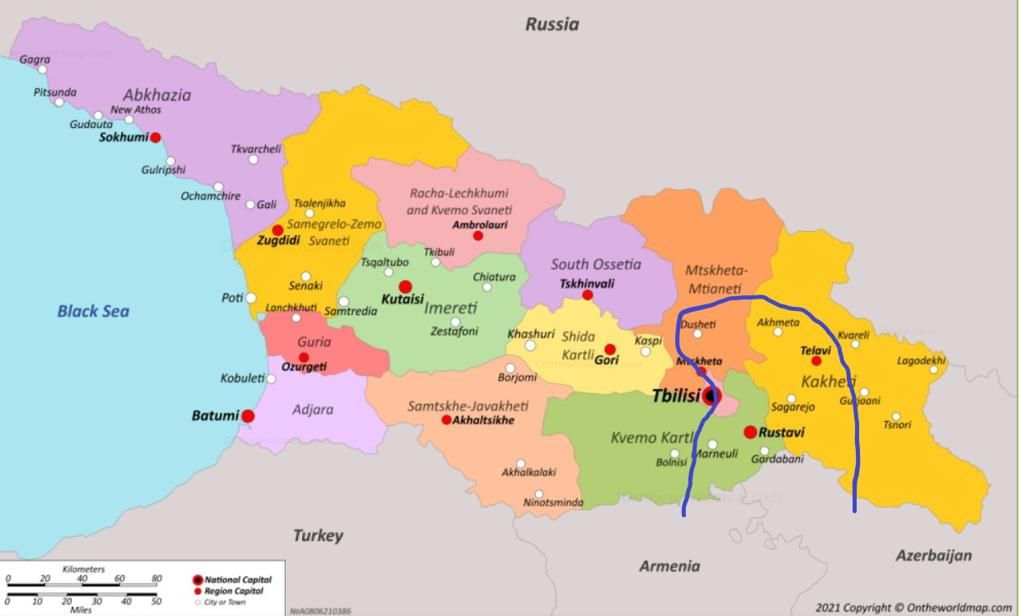
Georgia is a small country with a population of only 3 million people - today 1/3rd live in Tbilisi, the capital. For centuries, it was fought over by Persia, the Ottomans and by the 19th century annexed to Russia. Around 440,000 Georgians were shot or deported during the Soviet occupation and a further 400,000 died in WWII forced to join Soviet campaigns. Now they are an independent state.
During all these upheavals, the people have retained their unique and ancient cultural heritage - they even have their own language, script and alphabet comprising 33 letters. Imbedded are traditions of hospitality and cuisine, which we experienced throughout our time here.
Georgians have always found strength from their religion - 80% belonging to the Georgian Orthodox Church, which continues to this day.
Near Sighnaghi, we visited Bodbe Monastery swirling with mists, which also overlooks the Alazani valley. Another impressive architectural gem dating back to the 4th to 9th century. This is where St Nino died and is buried. Her grave is located inside the monastery, under the altar, reminding me of the crypt for Jesus in the Holy Sepulchre in Jerusalem. Again no photos allowed inside.
Known as The Enlightener, St Nino is credited with bringing Christianity to Georgia, when she converted the ruling king at Mtskheta - the long-time capital of the Georgian Kingdom - which we visited the next day. St Nino originated from Cappadocia, in Turkey and was said to be a relative of St George (also from Cappadocia), the patron Saint of Georgia. Lots of churches in Georgia are named in his honour.
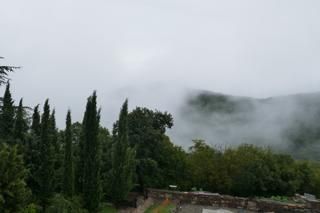
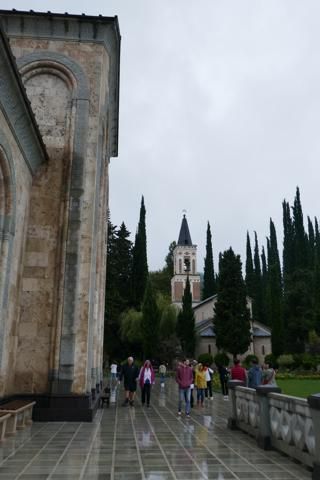
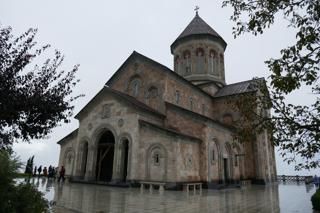
Bodbe was an important religious and educational centre and had a significant role in the political life of the country retaining its importance as a spiritual centre in the Caucasus for over 1000 years.
Mtskheta, a town with charm, towering monuments, quaint cobblestone streets and important religious buildings - is known as the Holy City of Georgia - headquarters of the Georgian Orthodox and Apostolic Church and a UNESCO world heritage site.
The historic churches of Mtskheta, former capital of Georgia, are impressive examples of medieval religious architecture in the Caucasus and we visited the two most important.
Jvari Monastery stands guard over the city where the Aragvi and Mtkvari rivers meet. Constructed in the early 7th century, it replaced a wooden church, which in turn replaced a pagan temple from the 4th century.
A life size wooden cross dominates the stark interior, as it is said to be the site where St. Nino planted the sacred cross to symbolize Georgia’s acceptance of Christianity in the 4th century - as a result Jvari draws crowds of pilgrims.
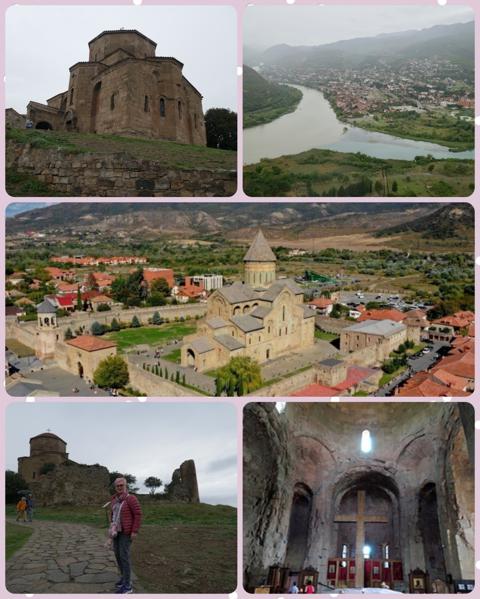
Svetitskhoveli Cathedral is Georgia's second-largest church, after the Holy Trinity Cathedral in Tbilisi. Renowned as the resting place of Christ's mantle, it has stood as a prominent Georgian Orthodox church for centuries and remains a highly revered spiritual destination.
Its current design, by the medieval Georgian architect Arsukisdze, was completed in 1029, though its historical roots stretch back to the early 4th century. The remains of beautiful frescos adorn the interior however many suffered damage when white-washed under the Soviet regime - we were permitted to take photos inside here and at Jvari.
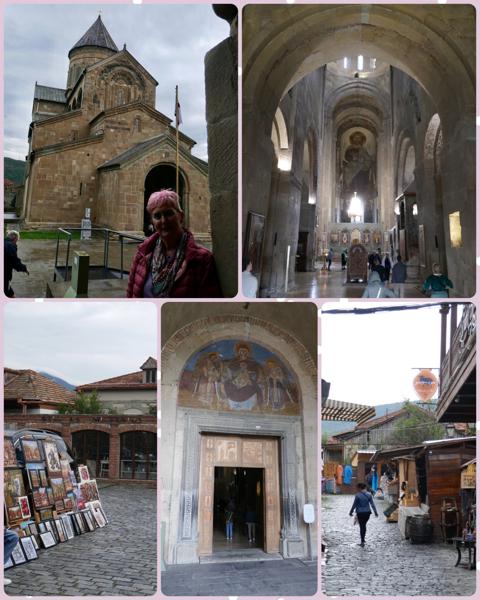
Tomorrow we head to Tbilisi - the charming capital of Georgia
